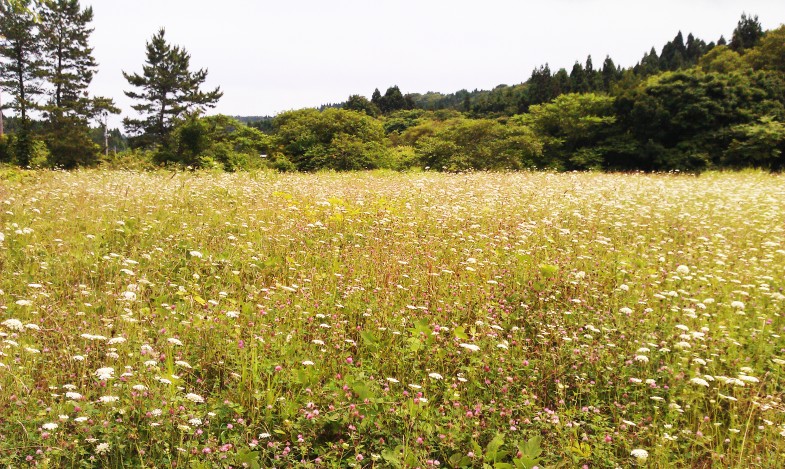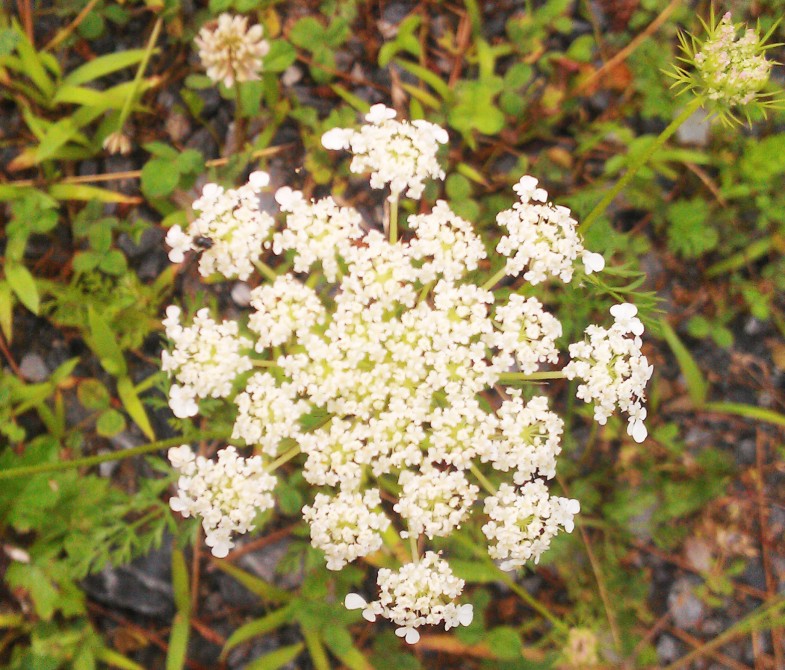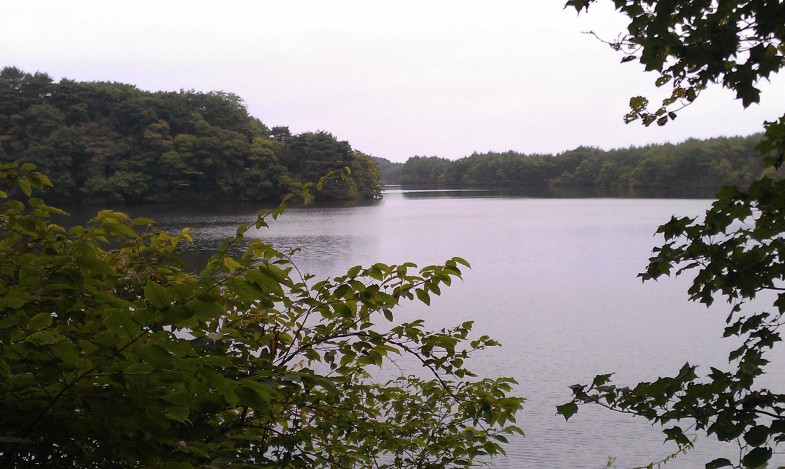
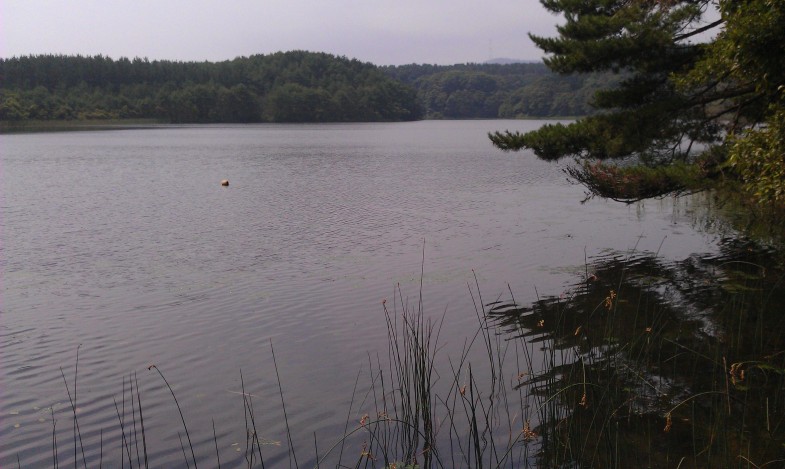
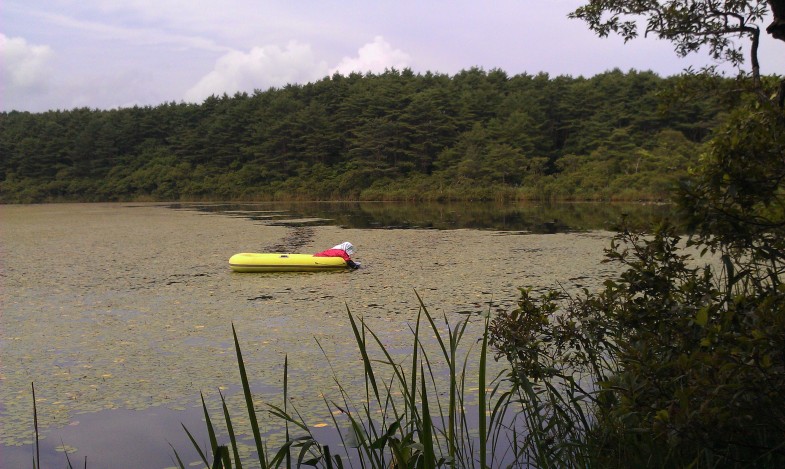
"사구 호수"란 모래 사장이 바람 등에 의해 기복을 만듭니다.、함몰에 강이 흐르는 등 자연스럽게 생긴 담수의 늪이다(니가타현 사가타 등。해류와 파도에 의해 바다 속의 모래가 제방처럼 떠오르는 출구를 막는다.、살로마 호수와 하치로 갯벌 등 기수 호수와는 할 수있는 방법도 다름)。모래 언덕 호수 자체도 세계적으로 손실되고있는 귀중한 존재이지만、생물적으로도 귀중한 환경을 만들고 있다。
Sand dune lake is a natural freshwater pond in a sandhill. It was shaped by wind. The wind had been carring sand and formed ups and downs, and then water stream into hollow places. It is not only very valuable existence itself in the world but also it gives important environment for biodeversity that’s being lost.
히가시도리무라에는、크고 작은 "사구 호수"가있다 (이름이 붙어있는 늪만으로도 13있다)。히가시도리무라·원숭이가 숲의 사구·후배 습지는 일본의 중요 습지 500에 선정되고 있다(실은 시모키타 반도의 대부분의 부분이 이 선정을 받고 있다고 말해도 좋다)。이 원숭이가 모리 사구 (폭 1 ~ 2km)、총 연장 17km)와 조금 내륙에 들어간 모래 언덕을 합친 「시모키타 사구」는、거의 알려지지 않았지만 사실 일본 최대의 모래 언덕이라고。알려지지 않은 이유는、사구 주변을 방풍·방사림이 둘러싸、사람의 눈을 만지기 어려운 일과、대부분을 방위성 등이 탄도 시험장 등에 사용、출입을 금지하기 때문입니다.。
There are many dune lakes in Higashi-dori village. Named lakes are minimum 13s. Salugamori sandhill (1~2 km width, 17 km length) include the rear wetland in this village has selected one of 500 of the important wetland of Japan (Actually most of Shimokita peninsula is selected also). Additionaly, Shimokita sandhill (includ this Salugamori sandhill with the next ones) is really the biggest one in Japan. However almost all japanese don’t know of it. One of the reason is that this place is hidden from the roads by pine grove for protect the wind and the sand. The other one, here is off limited, because this ares has been useing for test site of trajectory of Ministry of Defence (MD).
모래 언덕 호수 자체는 방위성 지역 외부에 있습니다.、일부는 호소 보소와 어업 이용 등도되어있는 것 같습니다.。그러나 방풍 · 방사 용 소나무 숲도 커집니다.、늪에 통하는 많은 길은 사라지고 있습니다.。인구 감소와 고령화는 여기에서도 진행됩니다.、학술적인 조사 등도 지금은 이루어지지 않았다.。
These are out of the area of MD. A few lakes of it look as useing fishery sometimes but not often. Most of the roads to go there is being lost by growing thickly weeds and pine grove. Creasing depopulation and ageing there. Academic reserch stopped now.
사진은 위에서 (북쪽에서 남쪽으로 나란히있다)、오누마、사쿄누마、아라누마。크기와 깊이는 조금씩 다르지만 모두 자연。오누마는 대나무 새우、사쿄누마는 히메마리모(Aegagropila Linnaei)로 유명하지만、조사가 되지 않은 현재는 어떻게 되어 있을까。아라누마는 수심 1~2m、준사이(Brasenia schreberi)를 채취하고 있는 곳이다。
Photo:(above) O-numa. Small river prawn lives in. (midlle) Sakyo-numa. Sakyo-numa is famous for “Hime-malimo” (small moss ball), but how is it now? (bottom) An old woman was picking “Jun-sai” (the water shield) from the water at lake Ala-numa. ※numa means lake or pond. All of dune lakes are Nature.
